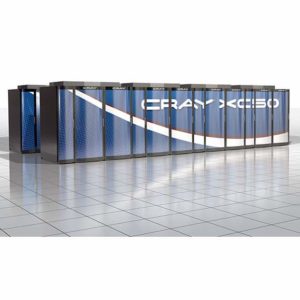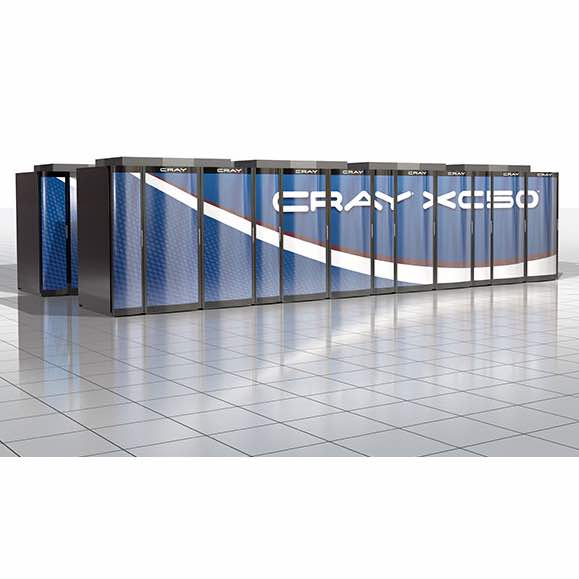 Today Cray announced that the Company is adding of Cavium ThunderX2 Arm processors to the Cray XC50 line of supercomputers. Cray customers will have a complete Arm-based supercomputer that features a full software environment, including the Cray Linux Environment, the Cray Programming Environment, and Arm-optimized compilers, libraries, and tools for running today’s supercomputing workloads.
Today Cray announced that the Company is adding of Cavium ThunderX2 Arm processors to the Cray XC50 line of supercomputers. Cray customers will have a complete Arm-based supercomputer that features a full software environment, including the Cray Linux Environment, the Cray Programming Environment, and Arm-optimized compilers, libraries, and tools for running today’s supercomputing workloads.
With the integration of Arm processors into our flagship Cray XC50 systems, we will offer our customers the world’s most flexible supercomputers,” said Fred Kohout, Cray’s senior vice president of products and chief marketing officer. “Adding Arm processors complements our system’s ability to support a variety of host processors, and gives customers a unique, leadership-class supercomputer for compute, simulation, big data analytics, and deep learning. Our software engineers built the industry’s best Arm toolset to maximize customer value from the system, which is representative of the R&D work we do every day to build on our leadership position in supercomputing.”
Cray enhanced its compiler and programming environment to achieve more performance out of the Cavium ThunderX2 processors. In a head-to-head comparison of 135 standard HPC benchmarks, Cray’s compiler showed performance advantages in two-thirds of the benchmarks, and showed significant (more than 20 percent) performance advantage in one-third of the tests, versus other public domain Armv8 compilers from LLVM and GNU.
Cray is currently working with multiple supercomputing centers on the development of Arm-based supercomputing systems, including various labs in the United States Department of Energy and the GW4 alliance – a coalition of four leading, research-intensive universities in the UK. Through an alliance with Cray and the Met Office in the UK, GW4 is designing and building “Isambard,” an Arm-based Cray XC50 supercomputer.
The GW4 Isambard project aims to deliver the world’s first Arm-based, production-quality HPC service,” said Professor Simon McIntosh-Smith from the University of Bristol. “Ease of use, robustness, and performance, are all critical for a production service, and our early experiences with Cray’s ThunderX2 systems and end-to-end Arm software environment are very promising. All of the real scientific codes we’ve tried so far have worked out of the box, and we’re also seeing performance competitive with the best in class. Having access to Cray’s optimized HPC software stack of compilers and libraries in addition to all of the open-source tools has been a real advantage.”
“The unmatched scalability and flexibility of the Arm architecture, combined with our upcoming SVE technology is the most efficient path to achieving the vision of exascale,” said Drew Henry, senior vice president and general manager, Infrastructure Line of Business, Arm. “The Cray XC50 takes us one step closer to exascale by fueling a new era of innovation with the HPC community, while expanding the HPC footprint of the Arm ecosystem, the world’s largest and most open for silicon designers, software developers, and tools providers.”
Cray XC50 supercomputers with the Cavium ThunderX2 processors will be available in both liquid-cooled cabinets and air-cooled cabinets to address a variety of datacenter needs. Compute blades can be mixed and matched with Intel Xeon Scalable processors, Intel Xeon Phi processors, and NVIDIA Tesla GPU accelerators. The Arm-based Cray XC50 supercomputers will be available in the second quarter of 2018.
Cavium has developed a leadership position in the Arm server market, and has collaborated with Cray for the last three years, starting with our first-generation ThunderX Arm processor, which was used to optimize the Cray compiler, libraries, and tool chain for the Armv8-A architecture,” said Gopal Hegde, VP/GM, Data Center Processor Group at Cavium. “ThunderX2 combines our second-generation, fully out of order high-performance Armv8-A custom cores with best-in-class memory bandwidth and rich IO configurations to provide a highly-differentiated processor for HPC applications. ThunderX2 based blades in Cray’s flagship XC50 systems, integrated with the Aries network and Cray’s optimized software stack, enables an ideal supercomputing platform for a variety of high performance compute workloads.”




